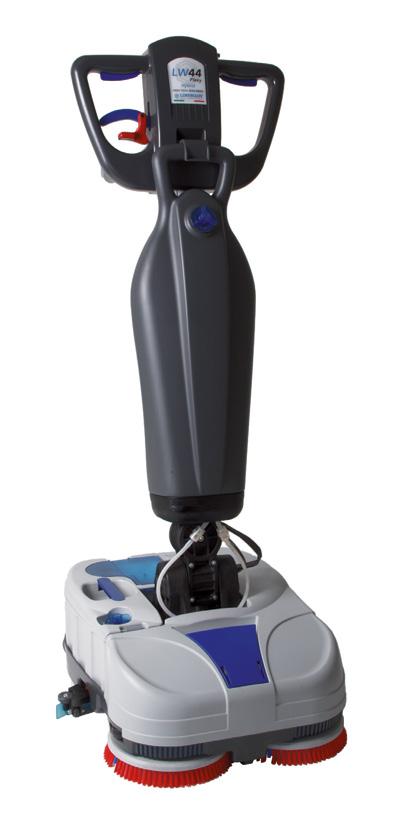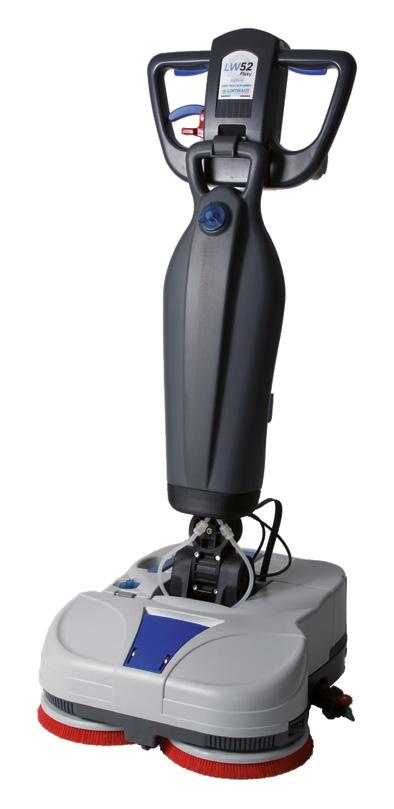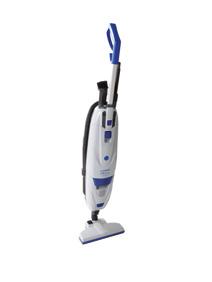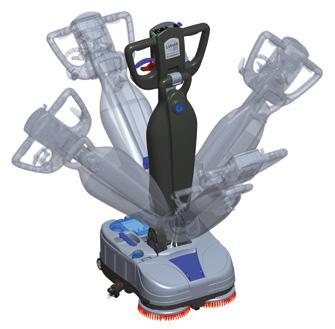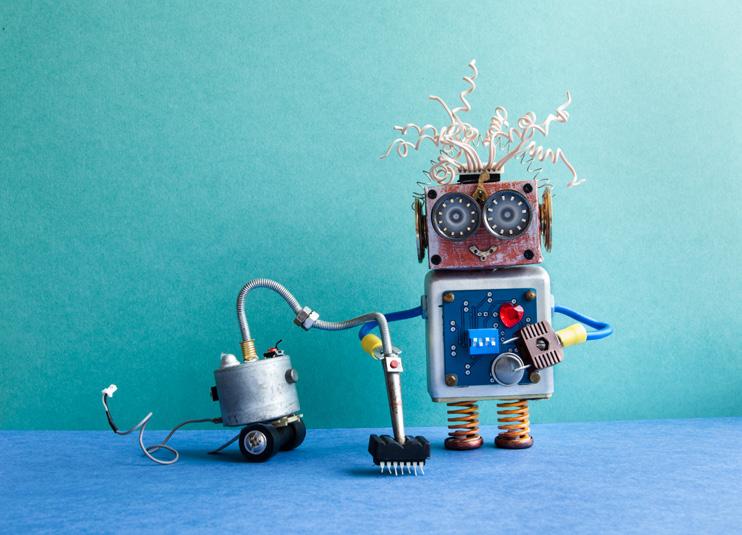
6 minute read
Cleaning industry in 2023 Opportunities and challenges
Edited by Simone Ciapparelli
2022 was characterized by the post emergency phase that followed a two-year period marked by the terrible experience of the COVID-19 pandemic. The virus, though, is still present in our lives and professional considerations. We are in a phase where a heightened sense of hygiene and cleaning importance remains for many. This sense for cleaning safety from facility users, has also begun to touch other areas such as sustainability and corporate responsibility. Cleaning as a form of caring now spreads beyond the internal protection of spaces to the protection of natural resources used in generating cleaning products, as well as the cleaning process itself. Cleaning and sustainability both branch into operational and commercial efficiency, another grow- ing concern that has risen this year that will carry into 2023. In the meantime, rising energy costs, cost of living increases and ongoing social struggles will continue to create challenges for many currently working within the industry. According to Cleaning in focus 2023, a report composed by industry experts and published by Interclean, these are some of the trends that will characterize the cleaning industry throughout this year: the report analyzes all of them.
Environmental sustainability
Across every facet of our lives, sustainability and ecological issues continue to be prevalent as we see increasing signs of the disruption that is being caused to our planet and to all those that live there. Businesses, staff and customers all have expectations for significant ecological cost. Natural resources that go into plastic or chemical processes will have an extraction cost that comes with them and in the case of chemical solutions, an environmental cost for disposal after use. When it comes to sustainable purchasing, the industry will continue to assess a multitude of factors beyond cleaning efficacy, i.e. the origin of the materials used for the product, or the ways of distribution and disposal. As the cleaning industry progresses through the coming years, we need to be sure that as different entities we can either ask the right questions about our purchases or give the right answers about our products.
The most traditional definition for a sustainable practice is the one that leaves a net zero impact on planetary resources. But is this result actually tinue to see innovation in these areas. End-of-life is still in its infancy, but harnessing reuse over virgin manufacture is going to create some improvements, while an emphasis on product durability, eliminating multiple cycles of remanufacture, will extend sustainability gains further.
Staff shortages
The ability to bring new people into the cleaning industry, including janitorial and custodial work, will continue into 2023, and potentially beyond. Combining this with issues relating to staff retention and anticipated rising costs, we can foresee that a key trend in the coming years is going to be the role that staff play in cleaning. It is imperative to combat the notion that cleaning is menial work, or an unimportant role to occupy. So, what trends within the industry are likely to help perception and retention?
Robotics and cobotics
the actions taken by commercial entities to create a more sustainable form of business. In 2022, IBM research into consumer preferences discovered that half of those surveyed had paid a premium, 59% on average, for products that demonstrated sustainable credentials or socially responsible practices. Before a cleaning product even reaches you, it can already come with a possible for human industry? What is certain is that we are currently not meeting that balance, but there are patterns of operation we can implement that will improve the sustainability of what we do. Two key areas are product packaging and end-of-life processes. Whether it’s bottles of cleaning solution, cleaning tools, machines or other cleaning products, 2023 will con-
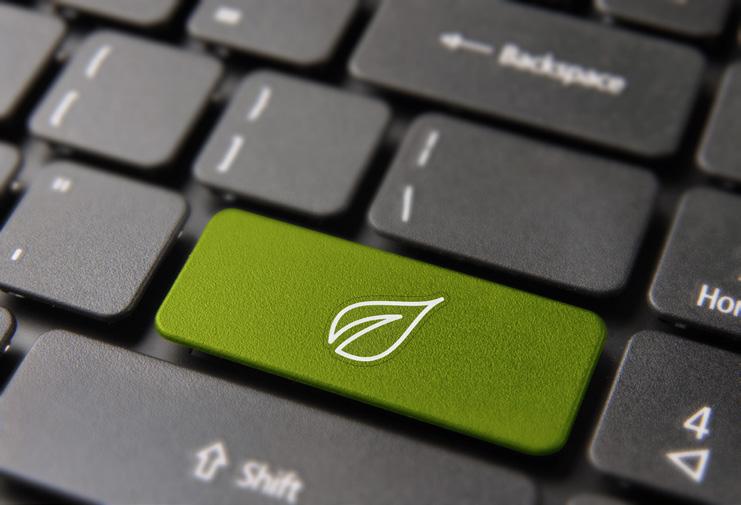
The ability to walk behind an industrial cleaning machine that provides efficient sustainable cleaning, rather than constantly refilling mop buckets and unplugging vacuum cleaners, is a very visible way in which the cleaning industry is changing. With both robotics and cobotics, we are seeing custodians and machines working together in a more comfortable way with a greater range of skills to develop. With more advanced technology, ongoing training is required in a way that allows an operator to feel they are continually skilling up. Learning to use a machine and how to adapt it to different tasks, engages operators and increases satisfaction with the work they’re doing. There are other benefits that come from technological development. Quieter, less interruptive machines and processes mean more daytime cleaning can take place, which gives operators a greater sense of wellbeing through better work life balance, something that is increasingly important to emergent generations. Over the coming years, the recruitment offer that the industry makes to young people not only needs to reflect the changing technological face of our industry, but also appeal to the things that young people value most in their employment opportunities.
Why go for robotics?
The robotisation of cleaning allows for an increase in the quality and availability of cleaning within a facility. Do cleaning staff constantly and proactively walk a facility looking for cleaning tasks? It’s not common, but this is exactly what autonomous cleaning brings in the form of robotisation. And it improves it in three specific ways:
Application: a robot can clean thoroughly wherever it is needed, without additional tools or resources, carrying everything it needs onboard.
Dedication: a robotic cleaner may be in a constant state of vigilance looking for areas in need of cleaning, or be diverted from their rounds to attend to specific cleaning needs by their operator.
Collaboration: telemetry from machines and a wealth of cleaning data can help machines and humans understand more exactly what the cleaning needs of a facility are. What patterns emerge that allow greater efficiency, what issues are faced repeatedly that need resolution.
These aspects mean that the human that used to do this work is now freed up for more important, or more meaningful tasks. The robot is not a replacement for the human, they are a collaborative tool that can work without constant supervision. They still report to their human, can be redirected by them, but it also allows their human partner to do more through doing less. Cost will be a significant consideration over the coming months and years, this applies even more so where adoption of new technology is concerned. When it comes to cost, implementing robotic or autonomous cleaning in a facility can have many cost implications from purchase, to training to ongoing maintenance or management costs. While total cost of ownership and operational cost efficiency are factors in many business decisions, cleaning robotics are also still in an early adoption phase. Initial investment can be significant and case studies, data driven calculations and the potential for ongoing cleaning improvements based on collected data are a vital part of the consideration process. As a result of this, a number of machine manufacturers and distributors have offered leasing models for machinery to alleviate some of the initial investment costs.
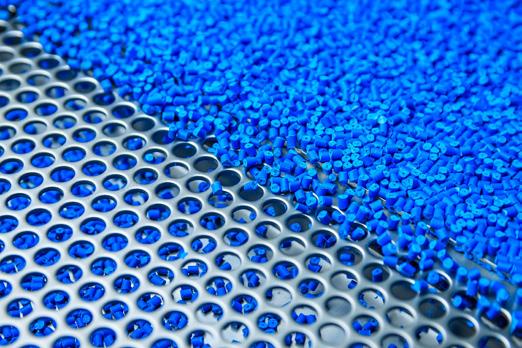
With the data collection and analysis noted in the previous section, facilities that adopt robotic cleaning machines can also assess longer term costs such as resource use (water, power, chemicals) and plan more accurately and according to their anticipated needs. The more people encounter robotic cleaning in the buildings and businesses they visit, creating a critical mass of awareness, the more they will expect to see them elsewhere, or rather, begin to make a distinction between places where proactive cleaning is automated for maximum hygiene and efficiency, and places where it is reactive or scheduled to fit specific patterns.
Raw Materials and Rising Costs
The increasing costs of sourcing materials and transporting them internationally, or intercontinentally, has had a significant impact on pricing, that is only exacerbated further by global rises in interest rates. As a result of gas supply restrictions, heating and other energy costs have consistently risen across the year and in many ju- risdictions, governments and other authoritative bodies have had to step in to ensure that runaway pricing does not cause wider devastation for citizens and business alike. As the issues of material and energy supply continue, it is likely that more costs will have to be passed on to customers, alongside other cuts to operation and activities. Over the next 12-24 months businesses will need to refocus on how they undertake different parts of their operations to deal with rising costs. As a part of operations, smart cleaning presents a variety of ways in which businesses can be more efficient and more cost effective. Wherever there is resource use, be it cleaning agents, power for machines, water or other repeat costs, taking on processes or machinery that not only maximize utility of those resources, but also allow a business to understand their usage, is going to be critical. 2023 and beyond will see rising costs and businesses moving to account for their costs in any way they can. Cleaning as a process is still essential for many in a post-pandemic world, but it can also support businesses with smarter, more efficient ways to work. So more businesses will look to efficient energy and resource saving cleaning processes that can reduce their ongoing costs, to counter rising costs in other areas.
Source: Interclean, “Cleaning in Focus 2023”
